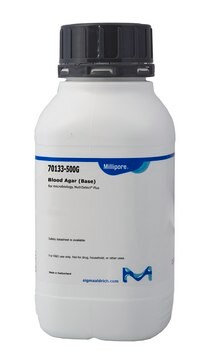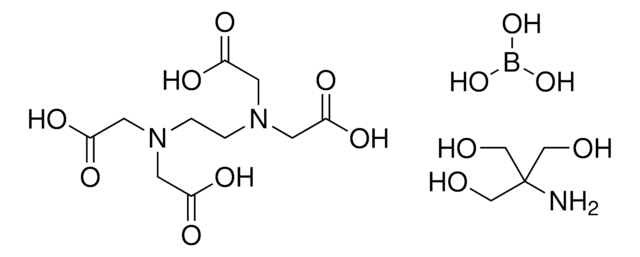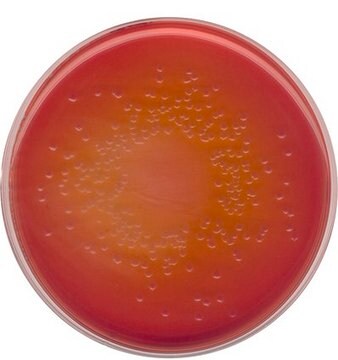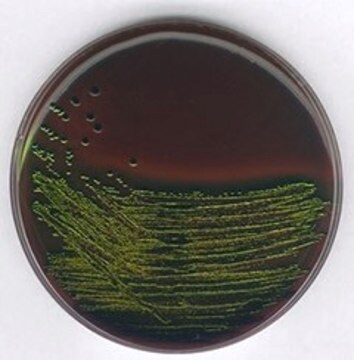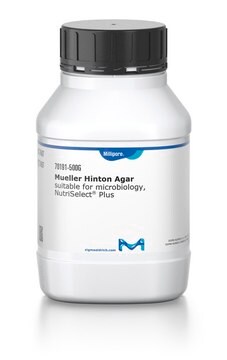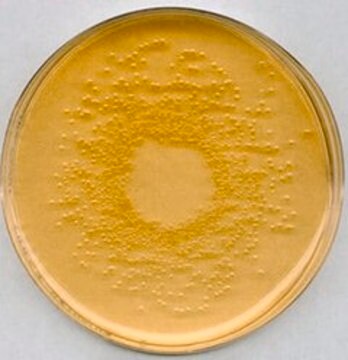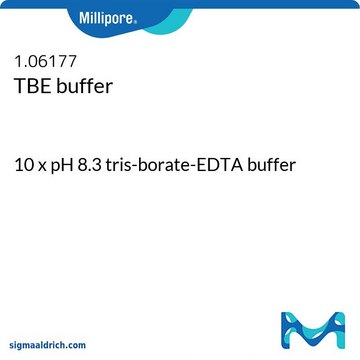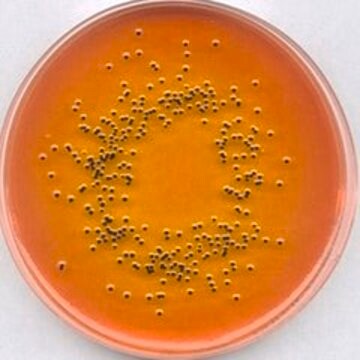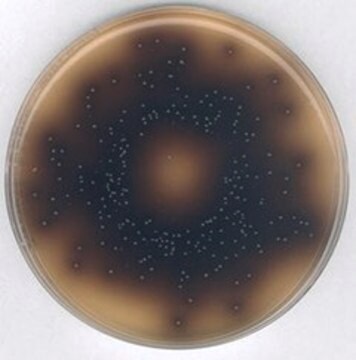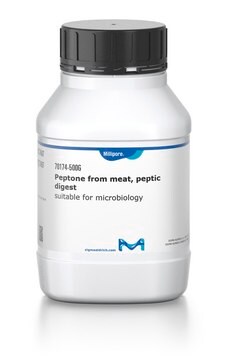55420
CLED Agar
suitable for microbiology, NutriSelect® Plus
Synonim(y):
BROLACIN Agar, Bromothymol-blue Lactose Cystine Agar, Cystine-Lactose-Electrolyte Deficient Agar
About This Item
Polecane produkty
sterylność
non-sterile
Poziom jakości
Formularz
powder
okres trwałości
limited shelf life, expiry date on the label
skład
agar, 15 g/L
beef extract, 3 g/L
bromo thymol blue, 0.02 g/L
casein enzymic hydrolysate, 4 g/L
L-cystine, 0.128 g/L
lactose, 10 g/L
peptic digest of animal tissue, 4 g/L
producent / nazwa handlowa
NutriSelect® Plus
metody
microbe id | utilization test: suitable
microbiological culture: suitable
pH końcowe
7.3±0.2 (25 °C)
Zastosowanie
clinical testing
environmental
food and beverages
microbiology
przydatność
nonselective and differential for Enterococcus spp.
nonselective and differential for Escherichia coli
nonselective and differential for Klebsiella spp.
nonselective and differential for Lactobacillus spp.
nonselective and differential for Proteus spp.
nonselective and differential for Pseudomonas spp.
nonselective and differential for Salmonella spp.
nonselective and differential for Staphylococcus spp.
nonselective and differential for Streptococcus spp.
nonselective and differential for coliforms
Opis ogólny
Zastosowanie
Uwaga dotycząca przygotowania
Przypis
The designations basic, plus, or prime are added to indicate the quality control level, from basic quality control to standard QC plus to prime for full regulatory compliance.
Informacje prawne
Kod klasy składowania
11 - Combustible Solids
Klasa zagrożenia wodnego (WGK)
WGK 3
Temperatura zapłonu (°F)
Not applicable
Temperatura zapłonu (°C)
Not applicable
Środki ochrony indywidualnej
Eyeshields, Gloves, type N95 (US)
Wybierz jedną z najnowszych wersji:
Masz już ten produkt?
Dokumenty związane z niedawno zakupionymi produktami zostały zamieszczone w Bibliotece dokumentów.
Klienci oglądali również te produkty
Produkty
Chromogenic media enable the selective detection of S. aureus, which produce bluish-green colonies that are clearly differentiated from other species.
Podłoża chromogenne umożliwiają selektywne wykrywanie S. aureus, które wytwarzają niebiesko-zielone kolonie, wyraźnie odróżniające się od innych gatunków.
Artykuł dotyczący wykrywania, identyfikacji, różnicowania i hodowli gatunków Pseudomonas.
Streptococci- Overview of Detection, Identification, Differentiation and Cultivation Techniques
Nasz zespół naukowców ma doświadczenie we wszystkich obszarach badań, w tym w naukach przyrodniczych, materiałoznawstwie, syntezie chemicznej, chromatografii, analityce i wielu innych dziedzinach.
Skontaktuj się z zespołem ds. pomocy technicznej